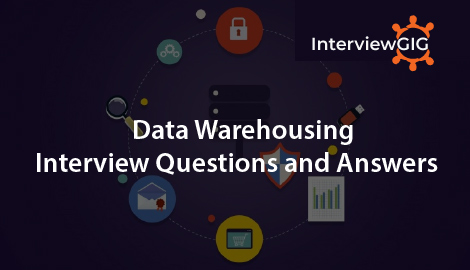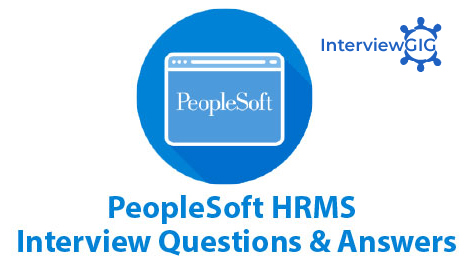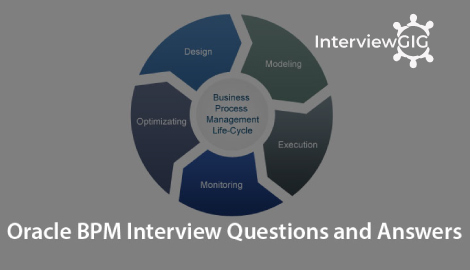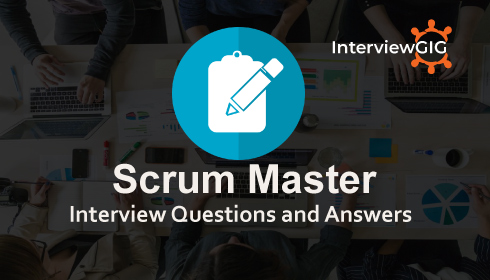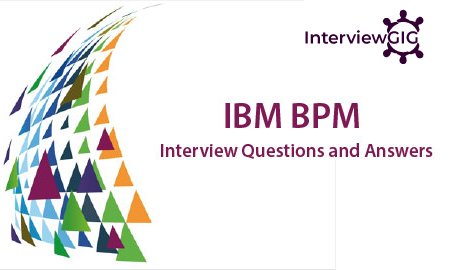PMP stands for Project Management Professional (short word PMP). It is an internationally recognized professional designation offered by the Project Management Institute (PMI). As of March 2018, there are 833,025 active PMP certified individuals and 286 chartered chapters across 210 countries and territories worldwide. The exam is based on the PMI Project Management Body of Knowledge (PMBOK).
What is Project?
The Business Dictionary defines a project as a “planned set of interrelated tasks to be executed over a fixed period and within certain costs and other limitations.” A project, then, could be something outside or in addition to the company norm for a typical business day. Perhaps a business upgrade, financial need or client request may be the catalyst for a project’s origination.
What is a project manager?
A project manager is the person who leads the project team who together accomplish the project goal. While anyone who holds the title of manager has ongoing duties for the duration of his/her tenure at a company, a project manager’s leadership is temporary to accomplish a distinctive purpose. For any specific project, there will be an appointed project manager. However, if this isn’t your official, full-time title, say you’re a department manager or another type of supervisor, it’s a good idea to add a basic knowledge of project management skills to your resume.
What is Project management?
Project management is the process of organizing the way that changes are implemented efficiently within an organization.
What is PMP?
PMP stands for Project Management Professional who has been granted the prestigious PMP certification issued by the Project Management Institute (PMI).A no-profit organization, leader in the US and worldwide, the PMI has started its activity in 1969 and has nowadays reached a net of nearly 3 million members who are continuously supported through education, networking, and above all through the project management standard, which gives them a common language to talk.
What is PMI-ACP?
ACP stands for Agile Certified Practitioner. This certification is provided by Project PMI (Management Institute) and hence it is PMI-ACP. ACP Certification carries a high level of professional integrity as it is a combination of agile training working on Agile projects and examining Agile fundamentals and tools. This certification is universally recognized and aids people in addressing the needs of associations that depend on certified Agile practitioners to apply their diversified skills to undertake the projects in an efficient manner.
What is CAPM?
CAPM stands for certified Associate in project Management. This certification from PMI.CAPM Certification provides recognition to the candidates who are planning to make their career in Project Management. This Certification demonstrates the individual knowledge about the strategies and terminology of (PMBOK® Guide). The knowledge a professional earns from CAPM Certification can be applied on respective job practices which increases the level of competence in the project. In Project Management People who convey the CAPM assignment after their name appreciate an abnormal state of validity from PMP® accreditation holders, venture chiefs, managers and associates.
What is PMBOK? And all versions of PMBOK?
PMBOK stands for Project management Body of Knowledge. It is the entire collection of processes, best practices, terminologies, and guidelines that are accepted as standards within the project management industry.
Because the body of knowledge is constantly growing as practitioners discover new methods or best practices, it must be updated and disseminated. This is an effort that is overseen by the Project Management Institute (PMI), the global not-for-profit member association of PM professionals which captures and publishes the PMBOK within the book, A Guide to the Project Management Body of Knowledge (PMBOK Guide).
- The first version of the PMBOK Guide was published in 1996.
- The second version of the PMBOK Guide was published in 2000
- The third version of the PMBOK Guide was published in 2004
- The fourth version of the PMBOK Guide was published in 2009
- The fifth version of the PMBOK Guide was published in 2013
- The fifth version of the PMBOK Guide was published in 2017.
- It is Now on its seventh edition, which was published in 2021
Why PMBOK?
PMBOK has been used as the standard by which PMP Certification is obtained. PMP Certification is based upon a survey of many companies’ best practices. The advantage of using PMP Certified Project Managers and Team members is that resources have already been trained. PMBOK is valuable for both companies and employees. PMBOK is valuable for many reasons. Here are three:
- The first reason PMBOK is valuable is that it allows companies to standardize practices across departments. This means that the people in development manage projects in the same manner as those in distribution.
- Second, PMBOK can help project managers to work with a standardized system across companies. Someone working for company x who then moves onto company y can use the same practices.
- Third, PMBOK discusses what works. The methods documented within the project management community can assist those who are uncertain of how to undertake risk management. PMBOK also discusses what doesn’t work. This prevents failure of projects.
Finally, project managers who are familiar with PMBOK standards can custom tailor their project management process to best fit their company’s needs. There’s an old saying, “To break the rules, first you have to know the rules.” When project managers invest time into learning the rules, they also are investing time in learning how and where rules can be broken.
What are basic process groups of PMBOK?
The basic concepts are applicable to projects, programmes and operations. The five basic process groups are:
- Initiating: In this process group developing project chart, identifying stakeholders and controlling stakeholders engagement
- Planning: In this process group planning, such as determining the budget, creating the WBS, and defining scope.
- Executing: In this process group executing the project plan, managing communications, conducting procurements, and managing the project team.
- Monitoring and Controlling: In this process group track and oversee progress, including those that controls scope ,cost, and quality
- Closing: This process group everything necessary to complete a project, such as closing a project phase or closing procurements
What are the PMBOK 6 of 10 Knowledge areas?
Those 49 project management processes can also be organized into ten knowledge areas:
- Project Communications Management
- Project Integration Management
- Project Scope Management
- Project Schedule management (Time Management-5Th Edition Name)
- Project Cost Management
- Project Quality Management
- Project Resource management (Human Resource Management-5Th Edition Name)
- Project Risk Management
- Project Procurement Management
- Project Stakeholder Management
What are the PMBOK 6 process names?
- Manage quality
- Plan Resource Management
- Monitor Communications
- Plan Stakeholder Engagement
- Monitor Stakeholder Engagement
- Acquire Resource
- Develop Team
- Manage Team
- Monitor Risks
What do the 49 project management processes describe?
According to the PMBOK® guide project management processes are linked by specific inputs and outputs where the outcome of one process becomes the input to another process but not necessarily in the same process group – a constant loop like the circle of life. Take for instance the process of identifying stakeholders that in practice can rely on inputs from almost any of the other processes and can also be the input to almost any of the other processes such as those involved with requirements, quality, communications, risk, procurement or stakeholder relationships. Each process can also consist of various activities required to execute the specific process and these activities represent the work to be done to complete the project.
What is ITTOs in the PMBOK Edition 6??
In the PMBOK® Guide Sixth Edition, ITTOs (Inputs, Tools, Techniques, and Outputs) is the basic building block of all 49 processes. These are the components of a process and understanding of these processes gives you a solid foundation for executing your project.
Inputs: Anytime, whether internal or external to the project which is required by a process before that process proceeds. May be an output from a predecessor process. E.g.:
- Project charter
- Project schedule
- Resource calendars
- Approved change requests
- Enterprise Environmental Factors (EEF), such as government or industry standards, project management information system, organizational structure, culture, practices, and infrastructure, etc.
- Organizational Process Assets (OPA), such as standardized guidelines, work instructions, project management templates, project files from previous projects, and other historical information, etc.
Tools: Something tangible, such as a template or software program, used in performing an activity to produce a product or result.
E.g.:
- Analytical techniques
- Project management information system(s)
- Benchmarking
- Product analysis
Techniques: A defined systematic procedure employed by a human resource to perform an activity to produce a product or result or deliver a service, and that may employ one or more tools. Meetings
E.g.:
- Expert judgment
- Inspection
- Interviews
- Decomposition
Outputs: A product, result, or service generated by a process. May be an input to a successor process.
E.g.:
- Work performance information
- Change requests
- Project management plan updates
- Organizational process assets update
- Project documents updates (Source:Projectmanagementprep)
What is Agile?
Agile is a monotonous approach to deliver software in a cumulative manner from the start of the project rather than delivering the whole project at the end. Agile is majorly applied in project management. If the project is typical, then Agile Project management methodology is the finest methodology to follow. This methodology mainly aims to deliver the product to the customer in smaller sprints instead of delivering at a time. Henceforth, it will be easy for the customer to test the delivered module of the project and ensure that proper quality is maintained.
What is Pareto Analysis?
Pareto Analysis is a statistical technique in decision-making used for the selection of a limited number of tasks that produce significant overall effect. It uses the Pareto Principle (also known as the 80/20 rule) the idea that by doing 20% of the work you can generate 80% of the benefit of doing the entire job.
What are the steps of Pareto analysis chart?
- Create a vertical bar chart with causes on the x-axis and count (number of occurrences) on the y-axis.
- Arrange the bar chart in descending order of cause importance that is, the cause with the highest count first.
- Calculate the cumulative count for each cause in descending order.
- Calculate the cumulative count percentage for each cause in descending order. Percentage calculation: {Individual Cause Count} / {Total Causes Count}*100
- Create a second y-axis with percentages descending in increments of 10 from 100% to 0%.
- Plot the cumulative count percentage of each cause on the x-axis.
- Join the points to form a curve.
- Draw a line at 80% on the y-axis running parallel to the x-axis. Then drop the line at the point of intersection with the curve on the x-axis. This point on the x-axis separates the important causes on the left (vital few) from the less important causes on the right (trivial many).
What is Project Issue Management?
Project issue management is the process of identifying, documenting, and resolving issues that arise during a project. Every project will run into issues, whether it’s the first of its kind or very similar to another project. To mitigate the effects of these issues, the project manager can develop an issue management plan. This gives the project team an avenue to identify and document issues, and allows the team to effectively resolve those issues.
What are the some tips to Manage Project Issues?
- Issues can feel overwhelming, and they certainly can be, unless you’re prepared for them. That’s why Jennifer suggested following these seven tips to deal with issues before they sidetrack your project.
- Provide a way to report. Without a process or a tool to report on the issue, it’ll be lost in the shuffle of the project. You need to report on issues and notify others, so that others can confirm if the issue remains.
- Log everything. You want to keep a detailed record of this process. There is nothing too small. It might seem insignificant to you, but it could hold the key to unlocking the solution to the issue. Plus, a log provides an archival tool for future use.
- Report promptly. Timing is important. If you allow reporting to lag, you lose the opportunity to resolve the issue before it becomes too large to fix or requires so many resources as to be a project-buster.
- Resolve promptly. If you’re reporting promptly, you better resolve promptly. Sitting on a known issue is asking for trouble.
- Escalate appropriately. You don’t want to throw all your resources where only some are needed. That said, you also don’t want to create any unnecessary roadblocks to stall a speedy recovery.
- Validate status regularly. The status of the issue is a crucial distinction. If the issue has been resolved but resources are still working on it unnecessarily, then that’s another issue.
- Notify everyone frequently. To prevent allocating unneeded resources to an issue, you want to have complete transparency. Everyone must know the status of the issue to work most efficiently.
– Jennifer Bridges [Source: Project manager .org]
Explain risk register in project management?
Risk Register is a document that is used to store the information of all the identified risk in any project. Also known as Risk Log, it is created during the initial stages of the project. In this document/register, the information of all the potential actions is also stored. It is an important part of the Risk Management Plan that helps the managers to track and address the problems when they arise.
The Risk Register is shared between the project stakeholders to let them be aware of the issues and taking actions to resolve those issues. The Risk Register performs risk management in the four steps –
- Identification of the risk
- Evaluation of the severity of the identified risks
- Finding possible solutions to the evaluated risks
- Analyzing and monitoring the effectiveness of the steps
What is Time and Material contract?
Time and Material Contract is basically an arrangement in which the contractor is paid on the basis of several factors, such as
- The actual cost of the direct labor, basically at the specified hourly rates
- The actual cost of equipment and materials usage
- Agreed on the fixed add-on to cover the profit and overheads
So, in the time and material contract, the contractor will get paid according to the used time on the project as well as all the expenses of the used material. The contractor will also get paid for all additional expenses during the contract.
What is a Fishbone diagram?
Fishbone Diagram or Ishikawa Diagram is a visualisation tool to understand potential causes of a problem to identify its root causes. It is used usually in brainstorming sessions so that the team’s conversation is focussed on the actual problem and not stray away towards only the symptoms.
Who is Stakeholder?
Project stakeholders are individuals and organizations that are actively involved in the project, or whose interests may be affected as a result of project execution or project completion. They may also exert influence over the project’s objectives and outcomes. The project management team must identify the stakeholders, determine their requirements and expectations, and, to the extent possible, manage their influence in relation to the requirements to ensure a successful project
What is RAID in the context of project management?
RAID stands for risks, assumptions, issues and dependencies. These are vital components that a project manager (PM) should always be aware of. There are always risks about actions and a PM must take least risk action. Unless assumptions about any estimates or actions are clear, these can go wrong. Issues and dependencies also limit the choices of actions.
How do you estimate using three-point estimating methods?
Three-point Estimation is based on three different estimated values to improve the result. The concept is applicable for both cost and duration estimation. This helps in mitigating the estimation risk. It also takes into consideration uncertainty and associated risks while estimating values. Estimation can be carried out for an entire project, or for a WBS component or for an activity. In a three-point estimation, the expected value of a task is determined by calculating the mean of three different values. These three different values are Optimistic Value (O), Pessimistic Value (P), and Most Likely Value (M).
What is a decision support system (DSS)?
A DSS is used vastly in enterprise applications; mainly MIS & ERP based systems. It provides automation and stability in the decision making process of the organization. There are two types of DSS, structured and unstructured. DSS connects many flow charts in the organizational process. It can be formulated and built statistically or stochastically.
What is CMM?
CMM stands for Capability Maturity Model. Every company has a proper process for the development of software. If you are going to apply for a job of software project management, you will definitely find it as the latest project management interview question. This model has been developed by software engineering institute that provides information on different levels of the process maturity. Here are the five levels of the CMM model:
Initial Level – It defines the starting point of a new process.
Repeatable Level – It specifies that the process is used repeatedly.
Defined Level – It defines or confirms process as a standard business process.
Managed Level – It involves the measurement and management of the process.
Optimizing Level – It includes optimization and improvement of the process.
What is CFF?
Critical success factors (CSFs), also known as Key Results Areas (KRAs), refer to the activities that must be completed to a high standard of quality in order to achieve the goals of your project.
There will be skills like:
- Ability to make changes in management
- Motivating the employees for the right direction
- Creating the right work environment for the team members
- Evaluation of cost and risk for the project
- Proper management and implementation of the strategies for the project
What is CMMI?
CMMI stands for Capability Maturity Model Integration. It is a process improvement approach that provides organizations with the essential elements for effective process improvement.
What will be involved in Project Scope Management?
The project scope management is referred to as a set of processes to ensure that the scope of the project is defined and mapped accurately. The techniques involved in scope management help project managers to plan the amount of work required to complete the project successfully.
In the scope management, there will be involvement of the information of requirements, creating WBS, controlling the scope and verifying the scope. In this term, WBS will define the baseline of scope for the project. The planning, controlling, and closing is the three processes of project scope management.
Project Scope Management is the process that involves a number of steps, the steps involved to define the project scope management are –
- Plan scope management
- Collect requirements
- Define scope
- Create Work Breakdown Structure
- Validate Scope
- Control Scope
What is the difference between Risk and an issue in the context of project management?
An issue is a problem or concern that may impede the progress of the project if not addressed.
A risk is any factor (or threat) that may adversely affect the successful completion of the project in terms of achievement of its outcomes, delivery of its outputs or adverse effects upon resourcing, time, cost and quality.
What is the critical path of a project?
The critical path is simply all the tasks that determine the end date of your project schedule. If one of those tasks is late by one day, then your project end date will be extended by one day. Often, there will be tasks that are not on the critical path; this is due to the slack in the project schedule. Slack is the amount of time a task can be delayed without impacting the start date of a subsequent task. If you refer to your current schedule, you can examine the Gantt chart and quickly identify the tasks that have some float compared to the tasks that have no slack.
What is Six Sigma?
It is a measure of quality that strives for near perfection. It is data-driven approach and methodology for eliminating defects. In order to achieve Six Sigma, a process must not produce more than 3.4 defects per million opportunities. If applied effectively, six sigma can approach can help finish a project on time, be reducing the risk of effects/failure.
Which one skill does a project manager need to succeed?
This question forces the candidates to decide one of the scores of skills needed of a project manager. This explains the experience and focus towards a project manager. Your greatest strength as a project manager should be your answer to this question.
How to Identify Project Risks?
Risk identification in the Project Management is often done by using brainstorming sessions to identify and clarify the main risks that may work against the project achieving its stated outcomes. It is important to clearly define the scope of the project so that the identification of risks can remain focused upon what potentially threatens the achievement of outcomes, delivery of outputs, and level of resourcing, time, cost and quality
What is Project integration management?
Project integration management is one of the ten project management knowledge areas and is the element that coordinates all aspects of a project. Project integration management is the coordination of all elements of a project. This includes coordinating tasks, resources, stakeholders, and any other project elements, in addition to managing conflicts between different aspects of a project, making trade-offs between competing requests and evaluating resources. Project integration management touches all five phases of a project:
- Initiating
- Planning
- Executing
- Monitoring and controlling
- Closing
How do you handle any changes to the project?
A project manager’s strength lies in his/her ability to display a high level of adaptability. Nobody wants changes in a project and are not entirely unavoidable. You must approach this question with great wit and convince the interviewer that you are capable, having handled such situations before.
What is Project schedule?
Project schedule describes the project’s deliverables as well as their deadlines and resource requirements. Think of it as the “what”, “when”, and “who” of the project.
What is SOW?
The Statement of Work (SOW) is an important tool used internally or externally to govern project activities performed by vendors or by departments within the organization. It is also legally binding and must be approved by the project’s client before work can commence.
Explain Project charter?
The Project Charter is a formal document to authorize the project and give the project manager the authority to spend the project budget.
- The Project Charter includes:
- Project purpose / justification
- High-level project objectives and product characteristics
- Project success criteria
- High-level requirements
- High-level schedule and budget
- Name the Project manager
- List out the project approval requirements and approval authority
The Project Charter is created in the Develop Project Charter process with the following inputs:
- Project statement of work (SOW)
- Business case
- Agreement
- Enterprise environmental factors (EEFs)
- rganizational process assets
What is the difference between Project, program and Portfolio management?
Project management:
Project management is the process that helps projects achieves their objectives. These processes include initiating the project, developing the plan to execute the project, executing the project according to the approved plan, controlling the project activities throughout its lifetime, and finally handing over the output of the project to the client, and closing the project.In other words, project management is the application of knowledge, skills, tools, and techniques to project activities to meet the project requirements.
Program Management:
According to the PMI, a program is “a group of related projects managed in a coordinated manner to obtain benefits not available from managing them individually.” Program managers look at cross-project dependencies, risks, issues, requirements, and solutions, and may coordinate with individual project managers to achieve these insights and keep the overall program healthy. They’re less concerned with the success of every single individual project, and more focused on the success of the overall initiative and achieving the larger benefit.
Programs often:
- Have strategic business objectives that are transformational in nature
- Cross departments or business units
Program management is the translation of strategic objectives into measurable business outcomes, coupled with the integration of the many related initiatives required for the outcome to be realized.
Portfolio Management:
Project Portfolio Management (PPM)) is typically a function of the PMO team and is a formal approach to orchestrate, prioritize, and analyze the potential value from a set of projects. An organization that employs project portfolio management centralizes the identification, prioritization, authorization, and management of projects within a portfolio
What are the functions of project management tool?
Following are some functions of Project Management tool:
- Task management.
- File storage.
- Reporting functions.
- Commenting and message boards.
- Client access.
- Subcontractor task assignment.
- Time tracking.
Read More: Project Manager Interview Questions and Answers
What is Project Plan?
Project plan is an expansive document covering virtually every aspect of the project and its management. It includes details on how the project will be executed, managed, and controlled. It usually has several constituent plans governing communications, risk management, change management, etc.
What is Project Planning?
Project Planning defines in detail the project activities and the product that will be produced, and describes how the project activities will be accomplished. Project Planning defines all major tasks, estimates the time and resources necessary to complete them, and provides a framework for management review and control.
Project Planning activities include defining and documenting the following:
- Work to be performed,
- Project goals,
- Estimates for planning, tracking, executing, and controlling the project,
- Commitments of the affected groups, and,
- Project alternatives, assumptions, and constraints
What is Work breakdown Structure?
WBS stands for Work breakdown structure. It is a hierarchical tree structure that outlines your project and breaks it down into smaller, more manageable portions. In Wrike, you can build a WBS by creating folders and subfolders, and can even go further to divide individual tasks into subtasks. The goal of a WBS is to make a large project more manageable. Breaking it down into smaller chunks means work can be done simultaneously by different team members, leading to better team productivity and easier project management overall.
What is Waterfall Model?
The waterfall model is a sequential software development process, in which progress is seen as flowing steadily downwards (like a waterfall) through the phases of Conception, Initiation, Analysis, Design (validation), Construction, Testing and maintenance.
What is V-model?
The V-model is a software development process which can be presumed to be the extension of the waterfall model. Instead of moving down in a linear way, the process steps are bent upwards after the coding phase, to form the typical V shape. The V-Model demonstrates the relationships between each phase of the development life cycle and its associated phase of testing.
What is Dual Vee Model?
The Dual Vee Model, like the V-Model is a systems development model designed to simplify the understanding of the complexity associated with developing systems. In systems engineering it is used to define a uniform procedure for product or project development. The model addresses the necessary concurrent development of a system’s architecture with the entities of that architecture and illuminates the necessary interactions and sequences recommended for orderly maturation of a system and systems of systems. This article explains the power of the Dual Vee Model when applied as a reminder model for development of complex systems
What is 8/80 rule?
A common rule of the thumb is that each work package must be no longer than 80 hours and no less than 8 hours in total length. If it is longer, decompose it further. If it is shorter, think of going up by one level.
What is MPMM?
MPMM stands for Method 123 Project Management Methodology which provides a complete “framework” for managing projects. This framework provides you with a step-by-step walkthrough of the phases, activities and tasks to be undertaken to complete a project. By following the Project Life Cycle framework for your project, you will greatly enhance your chances of project success.
What is a Project Baselines?
It defines a logical closure of any deliverable or cycle. Example you have completed the requirement phase with sign off from the client on the requirement document. So you put a baseline and say that further any changes to this document are change request. Versioning of source code is one type of baseline.
What is Business Object?
Business Object is a new query and report software program. It is a part of CSC software package. It is capable of performing more sophisticated mathematical calculations than IQ objects.
What is Condition Object?
Condition Object is a mode, state, situation and a condition which imposes upon an object without which knowledge and thought are alleged to be impossible.
What is Customizing Object?
A Customizing object in a SAP component is an object which is customized with the same contents in another component. The contents of the customizing objects have to be corresponding in different systems in a system landscape.
What is DMAIC?
DMAIC is a series of steps used to measure defects in business processes and improve profitability. The five steps are: Define Measure, Analyze, Improve, and Control.
What is DMADV?
DMADV is also a series of steps to measure and analyze the defects and produce better. The steps here are: Define, Measure, Analyze, Design, and Verify.
What is CAR?
CAR stands for Casual Analysis and Resolution. CAR identifies problem and perform a root cause analysis of the same. CAR needs to be performed at every project phase. Fishbone diagram is one of the ways to perform CAR.
What is DAR?
DAR stands for Decision Analysis and Resolution. DAR is to analyze possible decisions using a formal evaluation process that identifies alternatives against current resources.
What is Risk Register?
A risk register, sometimes known as a risk log, is an important component of the overall risk management framework. A risk register is used to identify, assess, and manage risks down to acceptable levels through a review and updating process. Risk register is also an important topic of study for the PMP® certification exam as well as the Prince2 Certification. The risk register database can be viewed by project managers as a management tool for monitoring the risk management processes within the project. It is the responsibility of the project manager to ensure that the risk register is updated whenever necessary. The task of updating the risk register is usually delegated to the project control function.
What are the components of a risk register?
There is no standard list of components that should be included in the risk register. The PMBOK Guide, and PRINCE2, and other organizations make recommendations for risk register contents; however, these are not the only recommendations that may be used.
- Data
- Reference number
- Key element
- Risk group
- Unique identifying number
- Risk
- Existing controls
- Consequence
- Likelihood
- Agreed priority
- Inherent rating
- Action summary
- Responsibility
What is the Perform Quantitative Risk Analysis?
It is a project management process that numerically analyzes the effects of identified risks on the entire project objectives. The benefit of this process is that it creates information of the quantitative risks to support the decision-making of project managers to minimize the uncertainty of the projects. To do this particular process, inputs are necessary. The inputs include the risk management plan, risk register, enterprise environmental factors, cost management plan, and organizational assets are used to produce the project document updates.
What is Risk reassessment?
Risk reassessment in project management involves identifying new risks and reassessing current ones. It is also involved in closing risks that are outdated and no longer threatening to the project. This particular project management tool is used in controlling the risks. Regularly creating a schedule for the risk reassessment to determine the kinds of risks present within the project can help project managers identify and control the risks. The number of repetitions of the reassessment also depends on the progress of the project in relation to its objectives.
What is Quality Control?
As a project manager, you must know about the term quality control. Quality-based questions are mainly included in the technical project management interview question. Completing any of the projects is one thing and maintaining the quality as per the requirements of market and customers is another. You have to understand the complete process of inspection so that you can ensure proper quality according to the requirements of the customer.
